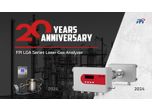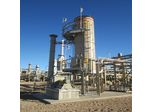Hazardous Air Pollutants (HAPs)
Articles & Whitepapers
-
Case Study: Multi-Staged Direct Fired Thermal Oxidizers vs. Selective Catalytic Reduction Systems
OverviewThis case study details the challenges faced by industrial facilities in treating nitrogen-bearing hazardous air pollutants (HAPs) from oxygen-depleted furnaces, highlighting the limitations and high operational costs associated with traditional Selective Catalytic Reduction (SCR) systems for NOx reduction. To overcome these inefficiencies, Anguil developed the Multi-Staged Direct Fired ...
-
Airport Air Quality: Challenges, Impacts, and Solutions
Airports are not just hubs for travel, they are also high-emission zones contributing to air pollution and noise pollution. With jet engines emitting CO2, NOx, PM2.5, UFPs, and ground support ...
News
-
FPI Celebrates 20 Years of Laser Gas Analyzer Development
FPI celebrates the 20th anniversary of the development of laser gas analysers. The inaugural laser gas analyzer developed by FPI was successfully manufactured in China in 2004 and was awarded the National Science and Technology Progress Second Prize ...
Can PET be used for pyrolysis? And why is PET not suitable for pyrolysis
Complete Guide on High Temperature Kilns in Environmental Industry
Alfa Chemistry's Biofuels Analysis Services: Ensuring Quality of the Supply Chain
Environmental, Health, and Safety Resources to Mitigate Lithium Battery Fire Hazards
Equipment & Solutions
-
Showcase
Vapor Combustor Unit (VCU)
Anguil’s Vapor Combustion Unit combines the simplicity of an enclosed flare with the destruction performance of a thermal oxidizer. Whether designed for intermittent use or installed on a continuous emission stream; the Anguil VCU technology has many advantages over other enclosed combustion systems. It is a robust device capable of handling varying emission flow rates and concentration ...











